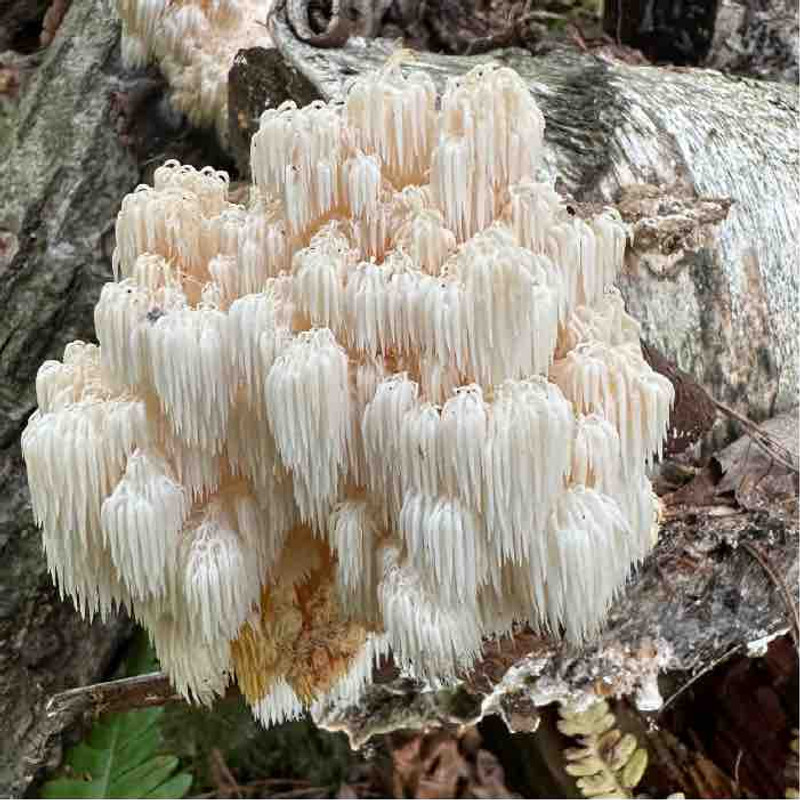Hericium americanum, also known as Comb Tooth or Bears Head mushroom, is commonly found in early fall in the wild on dead hardwood trees. But how does it differ from our other lovable Hericium species?
Comb Tooth, Lion's Mane, and Coral Tooth- What's the difference?
Comb Tooth differs from its relatives Lion's Mane (H. erinaceous) and the Coral Tooth Fungus (H. coralloides) in spine length and spore size. Comb tooth has branches that have long rows of spines, whereas Lion's Mane does not exhibit a branching pattern. Coral Tooth tends to have shorter spines (appearing more like bristles) than Comb Tooth. All species share similar medicinal compounds, but we think Comb Tooth has the best taste of the three!

The 3 Hericium species
What wood type does Comb Tooth grow on?
While all three species have similarities, there is a big difference in how well they grow in a given tree species. All varieties of Hericium appear to be weak competitors compared to shiitake and oysters, so do not expect bushels of mushrooms but instead yearly smaller harvests. One thing that makes us choose to cultivate Comb Tooth over other Hericium varieties is that it has a much wider tree species host range. They grow well on Birch, cherry, sugar maple, oak, poplars with thick bark, as well as beech.

When to Harvest Comb Tooth Mushrooms
People are often flummoxed as to when to harvest the mushroom as the spines just seem to keep on growing and lengthening. The short answer is to harvest before the spores drop because the mushroom will have its maximum yield and freshness achieved. After spore drop, the mushroom starts to yellow and dry, a sign it has completed its life cycle. With the branching Hericiums it is hard to tell when that will be though. Because of this we recommend harvesting when the spines are 1 cm in length and the mushroom is bright white and succulent looking. Harvesting the mushroom at any stage will not hurt the log and you can plan on years of harvest potential; we have logs that are 5 years old and still producing mushrooms!
As delicious as these mushrooms are for fresh eating, we like to dry them for later tincturing in both hot water and alcohol extractions for daily consumption to get the most out of any molecular health benefits they offer.
*A note on common names: mushrooms go by many names. What we commonly call certain hericium varieties may vary from other common names. For example Comb Tooth is also know by Bear's Head. Chestnut mushrooms are also know as cinnamon caps. If you are intent on growing a certain variety it is best to look for it by its scientific name.

